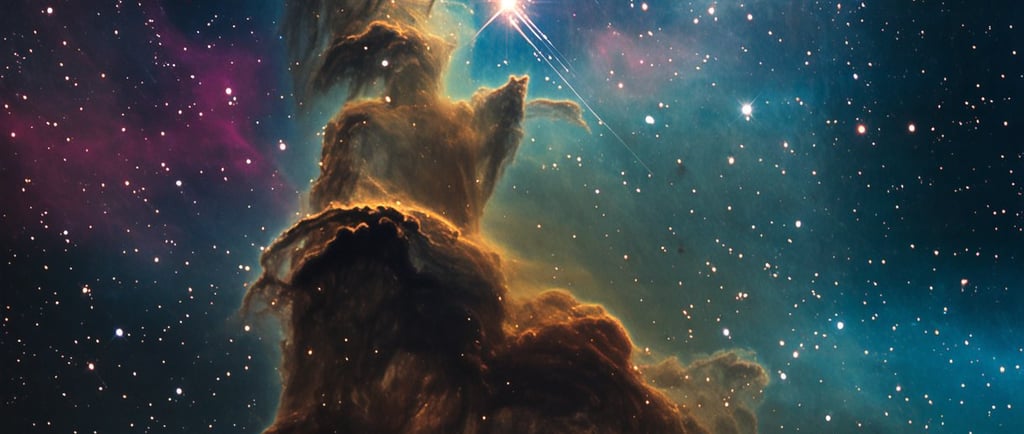NGC 2700: The Mystic Mountain


Introduction to the Carina Nebula
The Carina Nebula, often referred to as the Mystic Mountain, is a breathtaking cosmic formation located approximately 7,500 light years away from Earth. This stunning nebula is not just a visual spectacle; it stands as a testament to the intricate processes of star formation and the dynamics of our universe. Encompassing a vast region of gas and dust, the Carina Nebula is an essential subject of study for astronomers and astrophysicists, who aim to understand the birth and evolution of stars.
The Structure of the Mystic Mountain
The Carina Nebula is astounding in its dimensions, stretching about three light years in height. This cosmic pinnacle comprises primarily of hydrogen gas and cosmic dust, materials abundant in star-forming regions. The variety of colors observed in the nebula originates from different elements and compounds present, creating a stunning tapestry when viewed through powerful telescopes. As light waves interact with dust grains, they produce a mesmerizing display of beauty, making the Carina Nebula not only a site of astronomical importance but also an object of art in the cosmos.
Star Formation in Action
One of the most remarkable features of the Carina Nebula is its active star formation processes. Scientists have observed numerous young stars encased within the dense regions of gas and dust, fostering an environment rich with activity. As these stars ignite, they emit strong ultraviolet radiation that further impacts the surrounding material, leading to the formation of new celestial bodies. This cycle of birth and death within the nebula is a magnificent example of stellar evolution and has led to various studies detailing the ages and compositions of the stars within.
The Carina Nebula has been pivotal in enhancing our understanding of the lifecycle of stellar formation and the role of massive stars in galactic ecosystems. By investigating this marvelous structure, researchers gain invaluable insights into the conditions that propel these formations, contributing to our broader comprehension of cosmic events. The Mystic Mountain serves both as a backdrop for awe-inspiring images captured by the Hubble Space Telescope and as a key player in the ongoing quest for knowledge about the universe.
In conclusion, the Carina Nebula’s impressive footprint in the cosmos, coupled with its role as a region of active star formation, positions it as a focal point of astronomical research. It embodies not only the mystical aspects of our universe but also the scientific pursuits that seek to unveil its many secrets. Understanding the dynamics at play within the Mystic Mountain enriches our grasp of star formation and the life cycles of cosmic elements, making it a true marvel of the cosmos.
